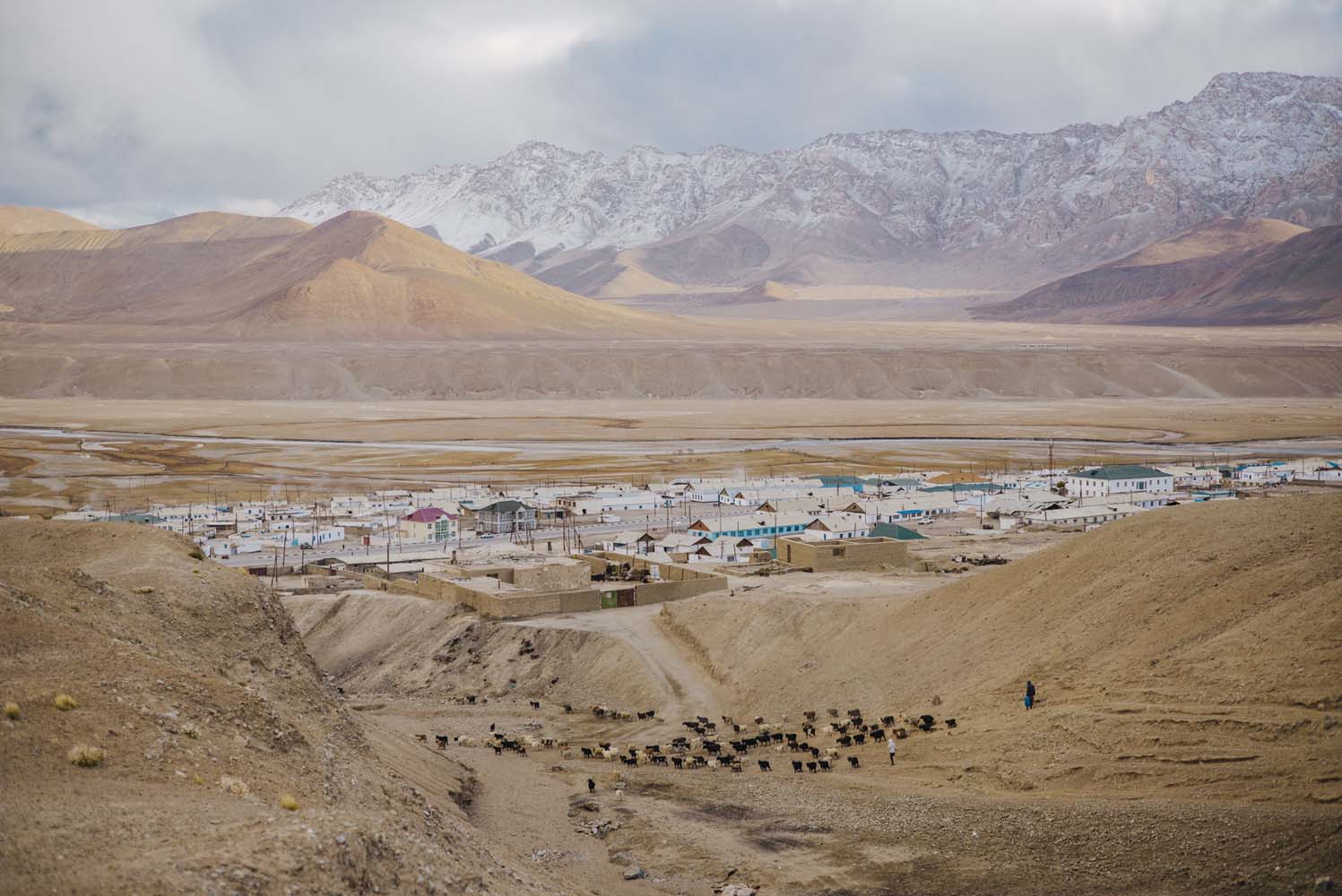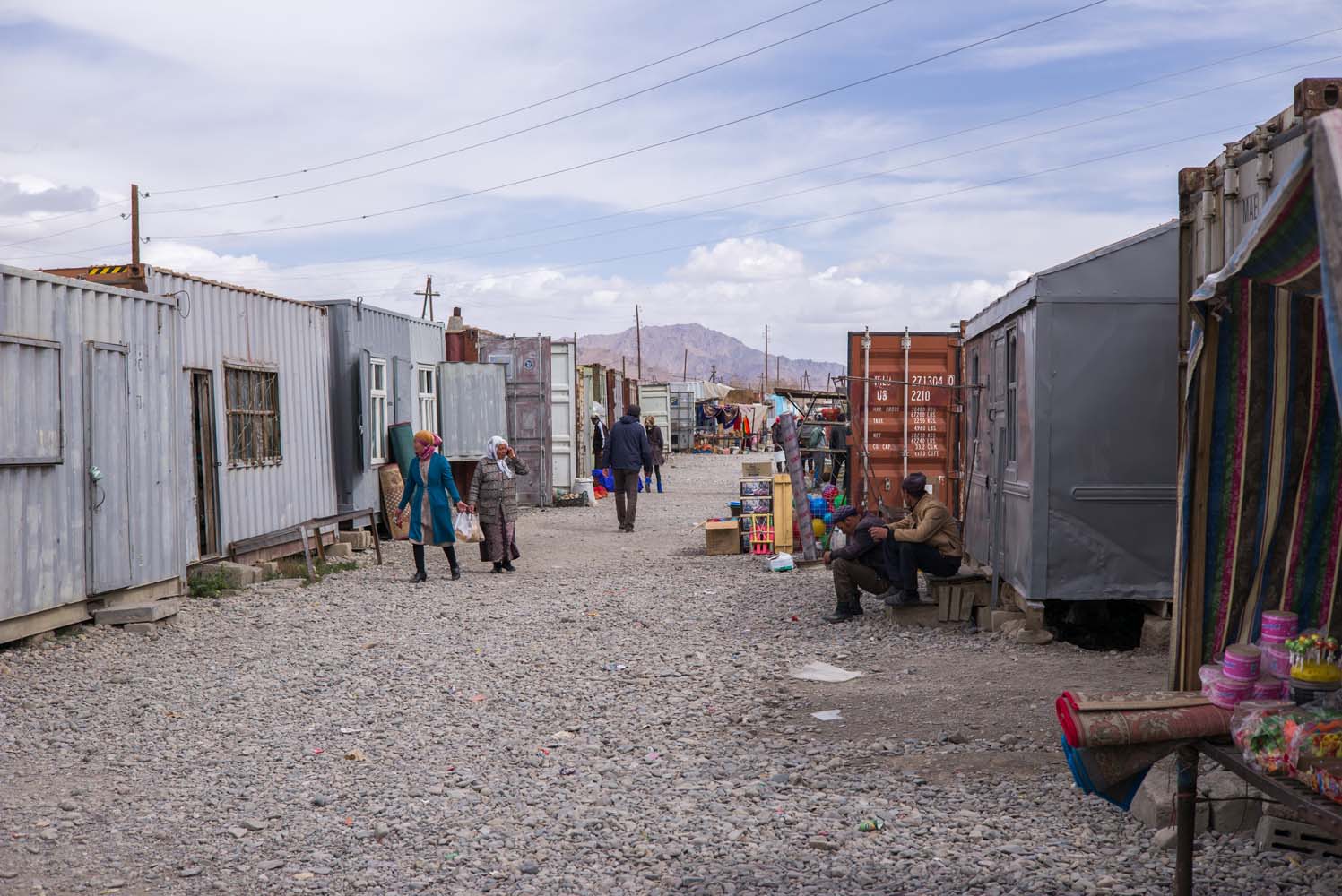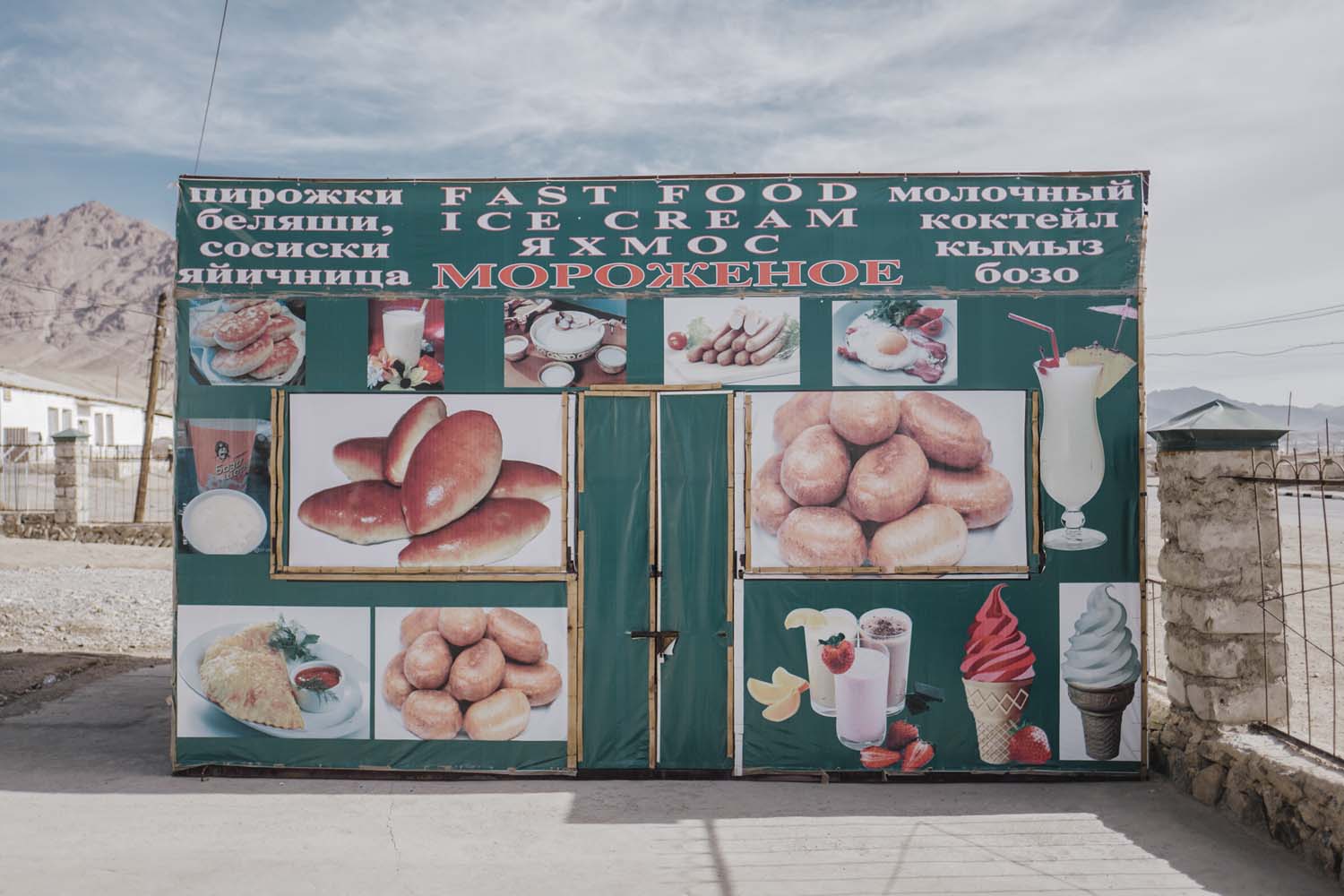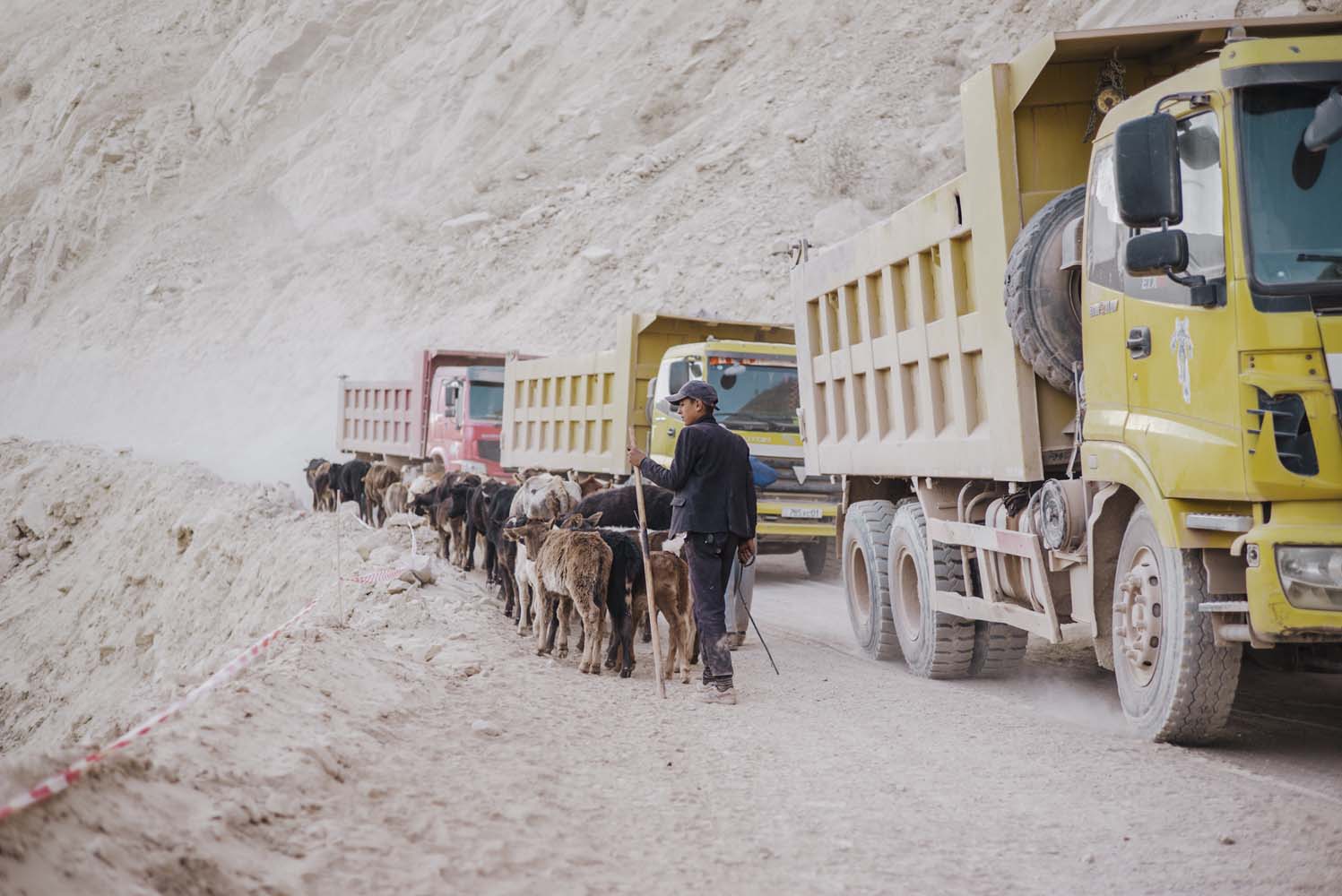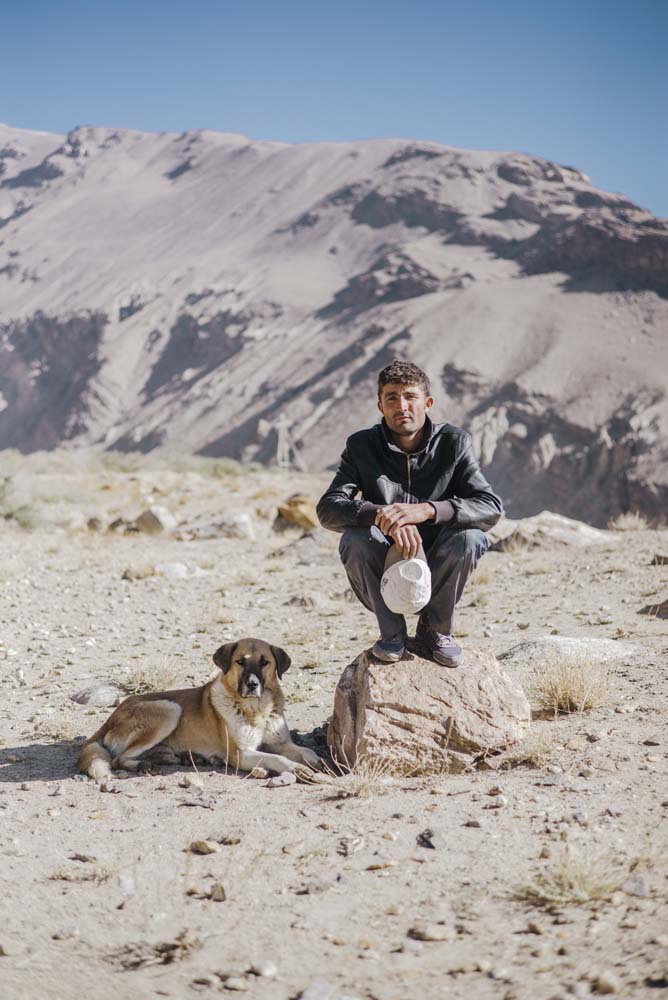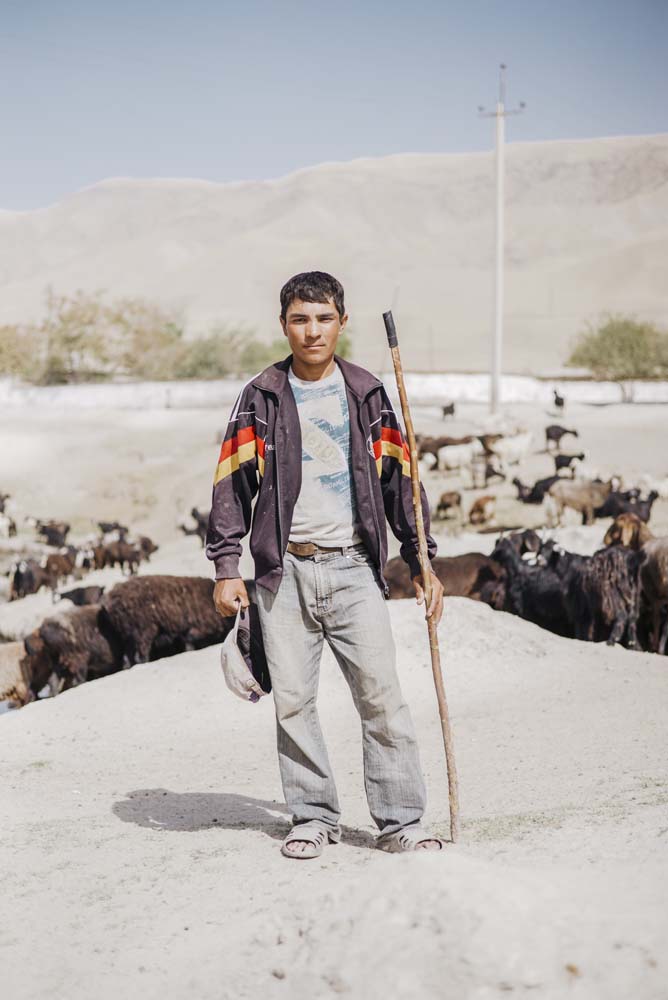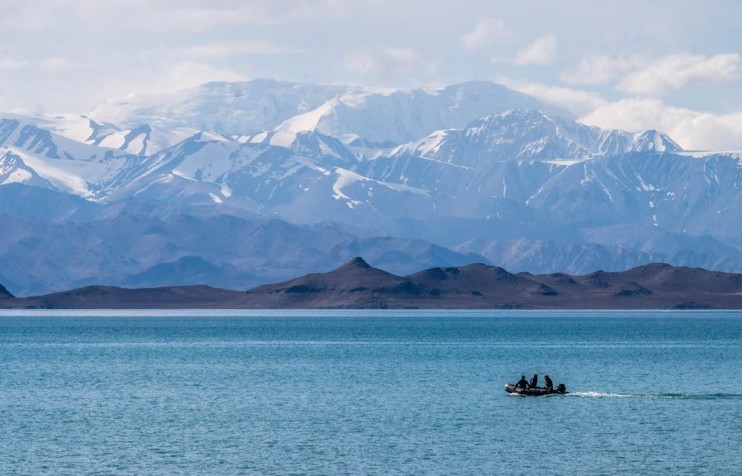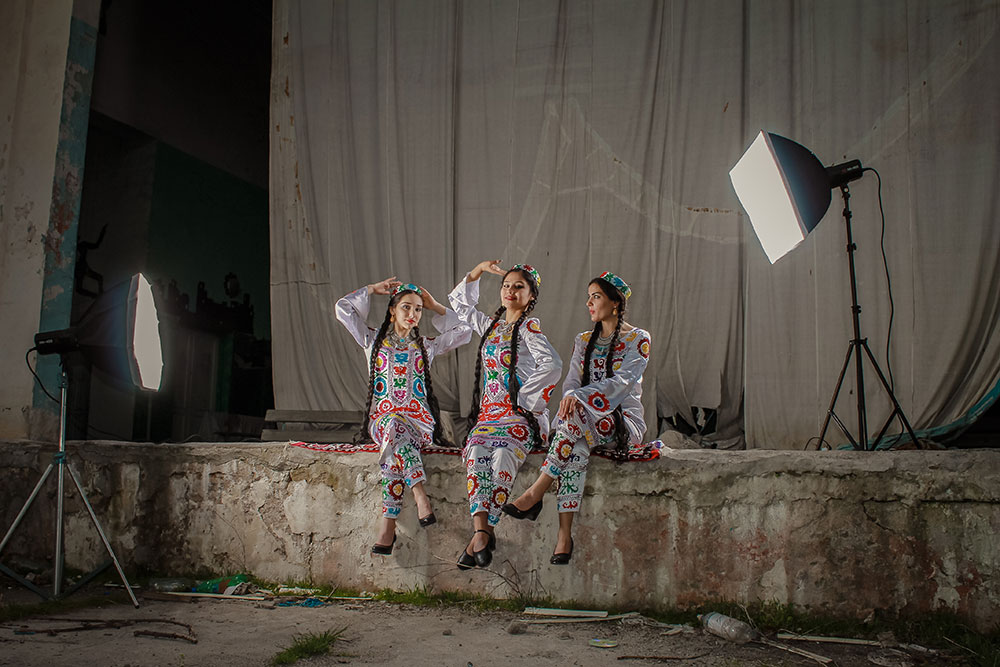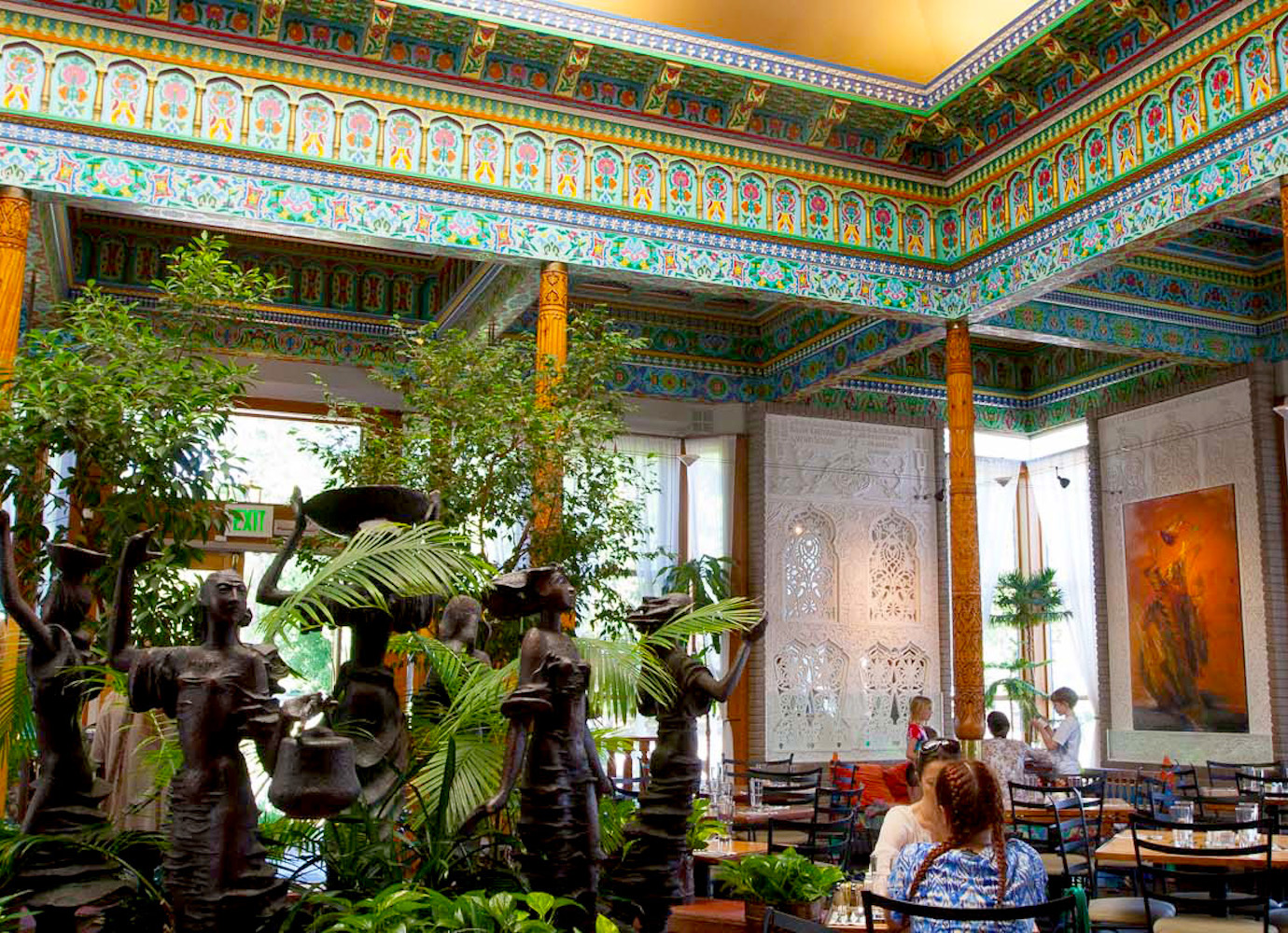High up in Tajikistan’s Pamir mountains, life brings gruelling challenges
With his long black hair, tousled beard, and cowboy hat, Bobur looks as if he’s stepped from a 1960s American western. A hunter by trade, his hunting knife and leather trousers make him appear somewhat dangerous, but the eyes in his furrowed face are good-natured, watchful. When I met Bobur in his hometown of Murghob, he was busy rummaging through the bazaar. The morning sun bounced from the old Soviet containers that served as the market stalls, while thick smoke rose from the roofs of the surrounding concrete huts.
In the workshop next to Bobur’s house is his blue-painted motorbike, emblazoned with the words “Lone Wolf” and “Big Boss”
Murghab became a strategically important point because of its proximity to China in the east and Afghanistan in the south
Bobur had come to the bazaar to buy fresh fruit, but that is in short supply. Instead, there are piles of sweets, headphones, soap — everything is “Made in China”. It’s near enough impossible to grow food at such a high altitude, which means locals struggle to eat healthily. Most of the products are shipped over from China. “My children have no prospects here,” the 44-year-old says.
The container bazaar forms the centre of Murghob, a small town of about 7,000 people in Nagorno-Badakhshan, a region in southeastern Tajikistan. It is far from the political and economic centre of Dushanbe, the capital of the Central Asian republic. Most of its inhabitants live in great poverty.
At the same time, tour operators advertise the Pamir Mountains, the so-called roof of the world with its unspoiled nature, to high mountain fans and adventurers. More and more tourists are trickling to Tajikistan every year, giving locals a sense of fragile hope.
Bobur does not believe that a tourism boom will reach his hometown. He tells me there is not much up here at 3,600 metres above sea level: the soil is infertile, the climate —harsh; electricity and water are scarce. “There is no work here. Only very few can afford to study in the big cities,” he says. Many young men go to Russia and work in construction. “Some leave their families here and never return.” Bobur is proud of his homeland. “In Russia, you might have a job. But you are discriminated against by society and work yourself to death for little money.” His brother taught him to hunt before he died: “This area is teeming with yaks and rare sheep, which provide juicy meat.” But since Bobur has heart problems, he only goes hunting when the family’s meat supply is running low. He earns money selling phone cards in the neighbouring village.
“The government seems to have forgotten us,” says Bobur.
View of a lake outside of Dushanbe
Many rituals of the Ismaili Muslims are gradually disappearing, such as this dance for the dead
It was cold, as it always is in Murghab, when I first visited in autumn 2016. What brought me to eastern Tajikistan was a podcast: I heard that Tajik guest workers were leaving Russia in droves because the economy was faltering and there was too little work for Russians themselves. Once I started reading more about Tajikistan, I became engrossed in the history and landscape of the country. The Pamir Mountains seemed particularly interesting: it is an autonomous region with its own culture, religion, and language. I looked for a translator and planned my trip.
I flew directly from Germany to Dushanbe. To reach Murghab, my translator and I had to take a special 4x4 taxi up from Khorogh, the capital of the Nagorno-Badakhshan region. The drive there was gruelling: as with much of the Pamir Highway, it was made up entirely of gravel roads, and there were not many petrol stations where you could stop. When we reached the high altitude, we stopped at one house where we stayed with two women and got something to eat. The high altitude made me sick: I had trouble breathing and couldn’t sleep well. During the day, I felt like my head was mud.
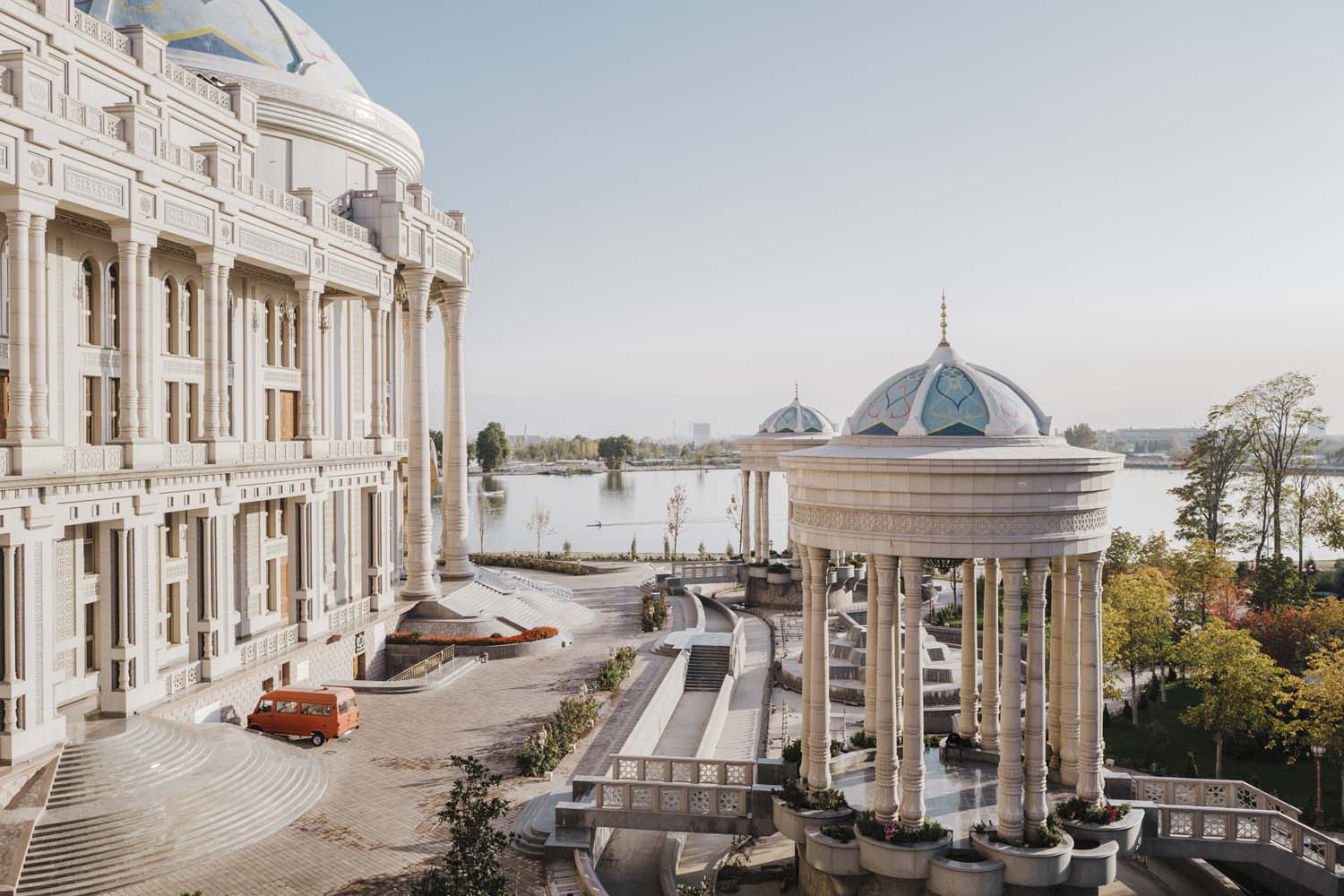
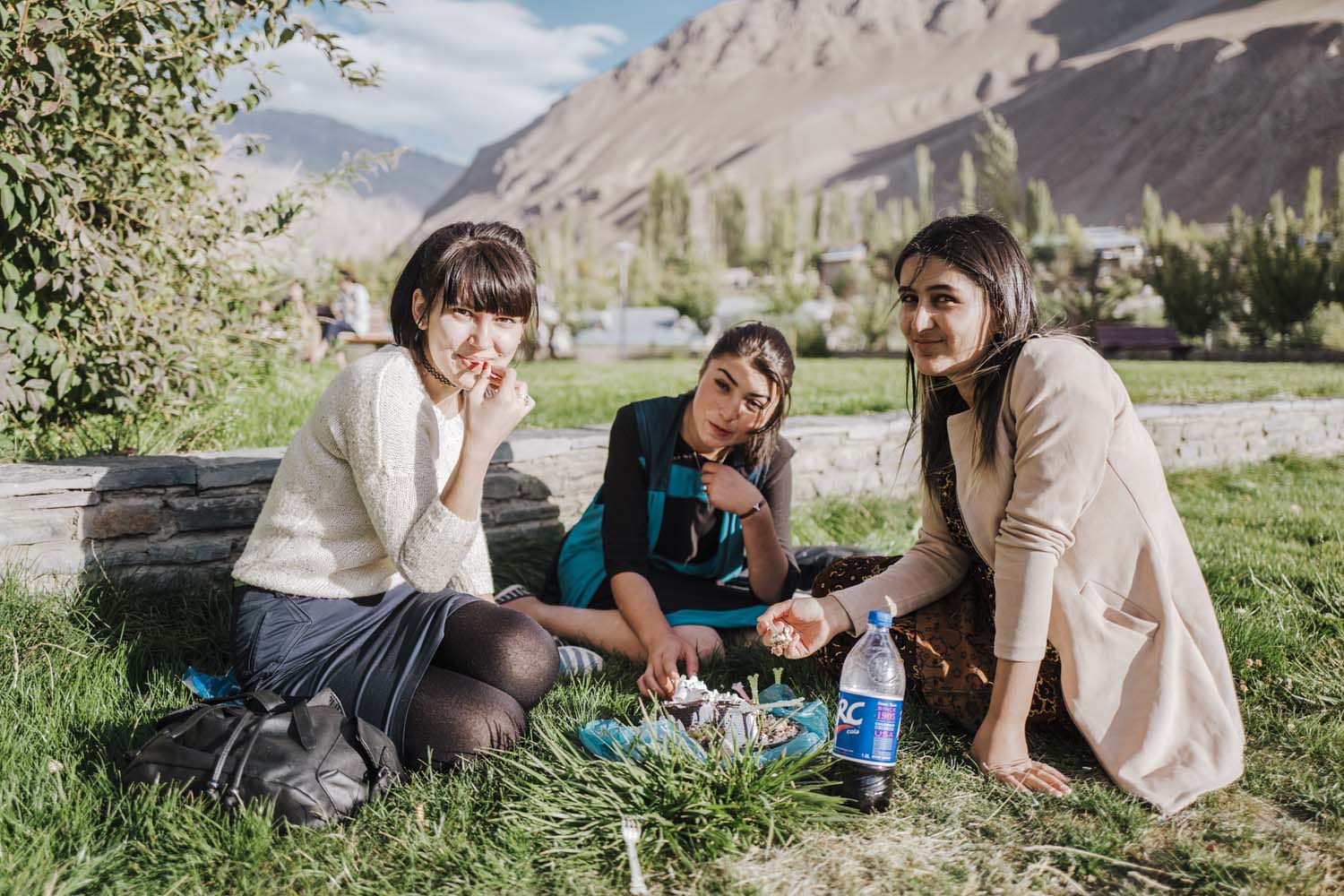
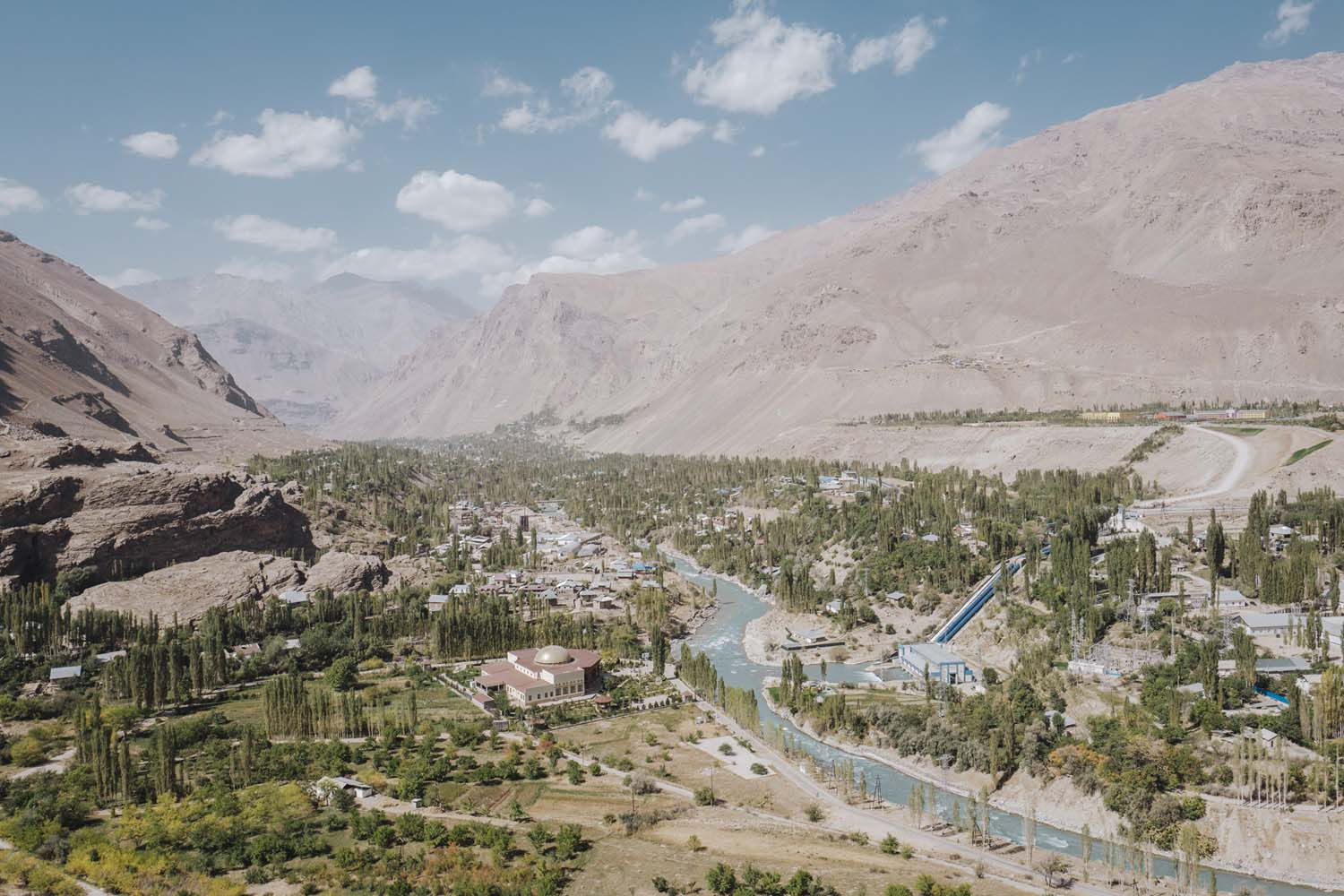

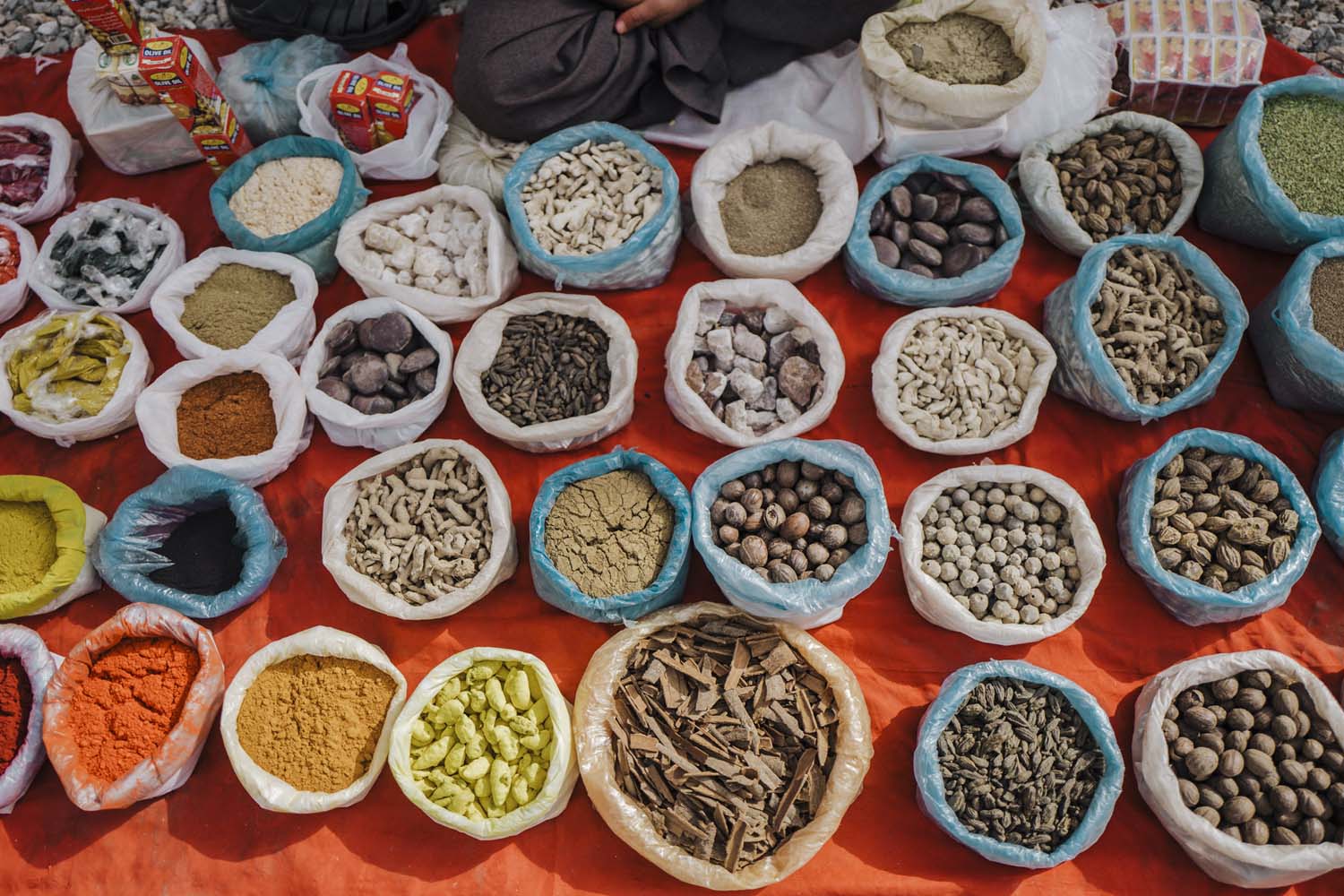
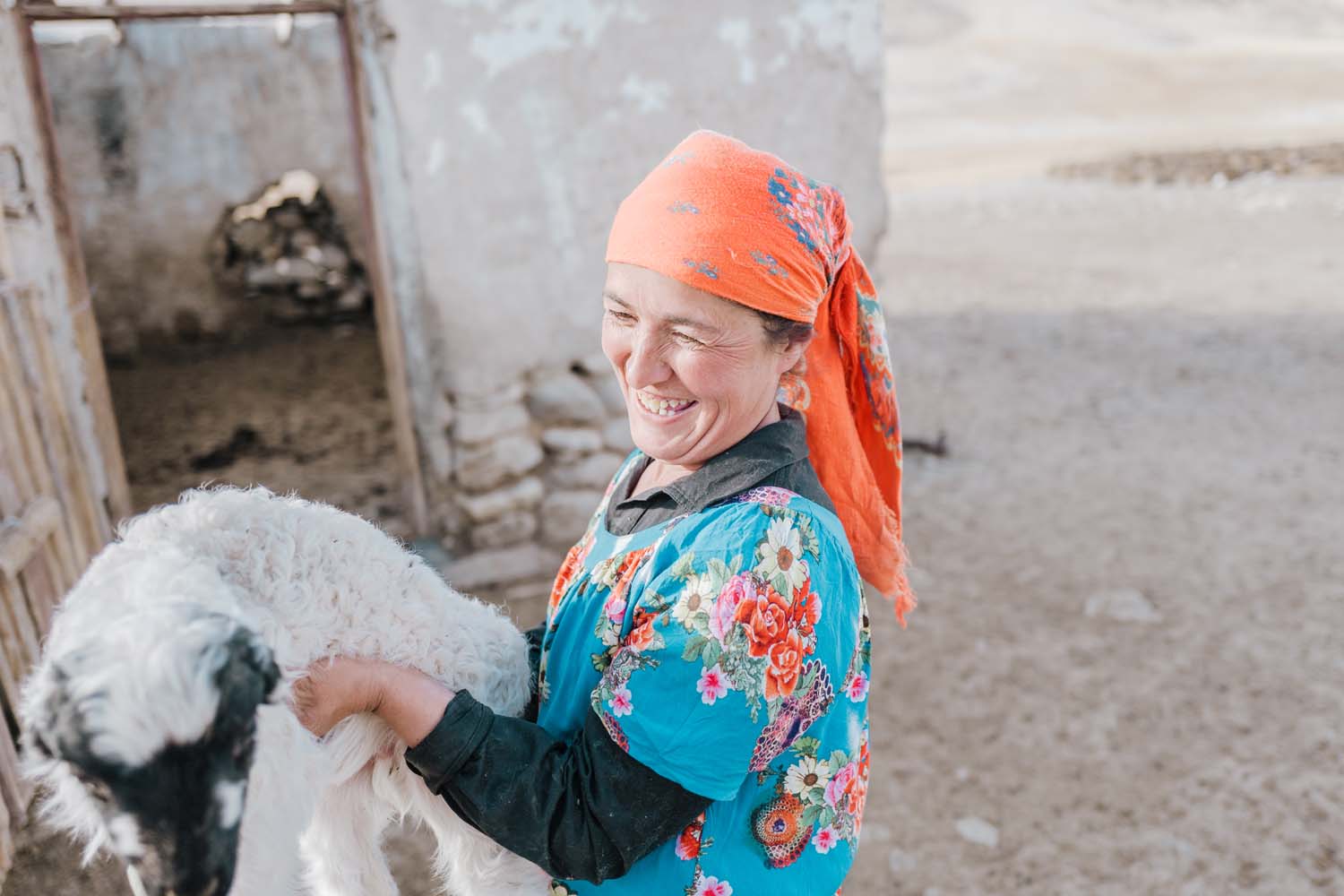
The average temperature of the village hovers around zero degrees Celsius, and in January, the thermometer drops to minus 20 degrees. There is almost no rainfall all year round, and water has to be pumped from wells. Although there is an old Soviet hydroelectric power station on the city’s outskirts and some people make do with solar cells, there is no comprehensive electricity supply. At night, it is pitch black.
Unlike most people in Murghob, Razan, who runs one of the bazaar shops, leaves in winter. When the temperature starts to drop in October, she and her mother move to Khorogh, five hours away by car. “My children have long since grown up and have houses in Khorugh,” she says. At first, Razan’s mother was reluctant to leave her home in Murghob, but the extreme altitude of the place and the cold got too much for her. People in Murghob rarely live beyond 60 years of age. That is ten years less than the Tajikistani average.
Razan
Celebrations at a school in Murghab for Teachers’ day
Before the Russians came to the region in the mid-19th century, only a few Kyrgyz nomads roamed this area. Then came the Russian Revolution, and new borders followed. In 1924, the area became part of the Tajik SSR. Murghab became a strategically important point because of its proximity to China in the east and Afghanistan in the south. Soldiers were stationed here, and vehicles on their way to Dushanbe or the Kyrgyz trading centre of Osh were serviced here.
Because of the hostile climate, the population was heavily subsidised. Electricity, water, and regular food deliveries were guaranteed by the state. With the end of the Soviet Union, all this came to an abrupt end. Many people left Murghab. Since the border with China opened 13 years ago, new goods have flowed into the country. The Tajik government also leases smaller parts of the country, particularly rich in resources, to the Chinese. But the local population fears that the area will soon be cannibalised by its overpowering neighbour. For many, tourism provides hope that the region’s mountain landscapes can be preserved, rather than extensively mined for raw materials.
“Maybe the tourists can help the people here,” Razan says, pointing to the sock she has now finished knitting. “There are more and more of them. And the foreigners love our traditionally made products.”
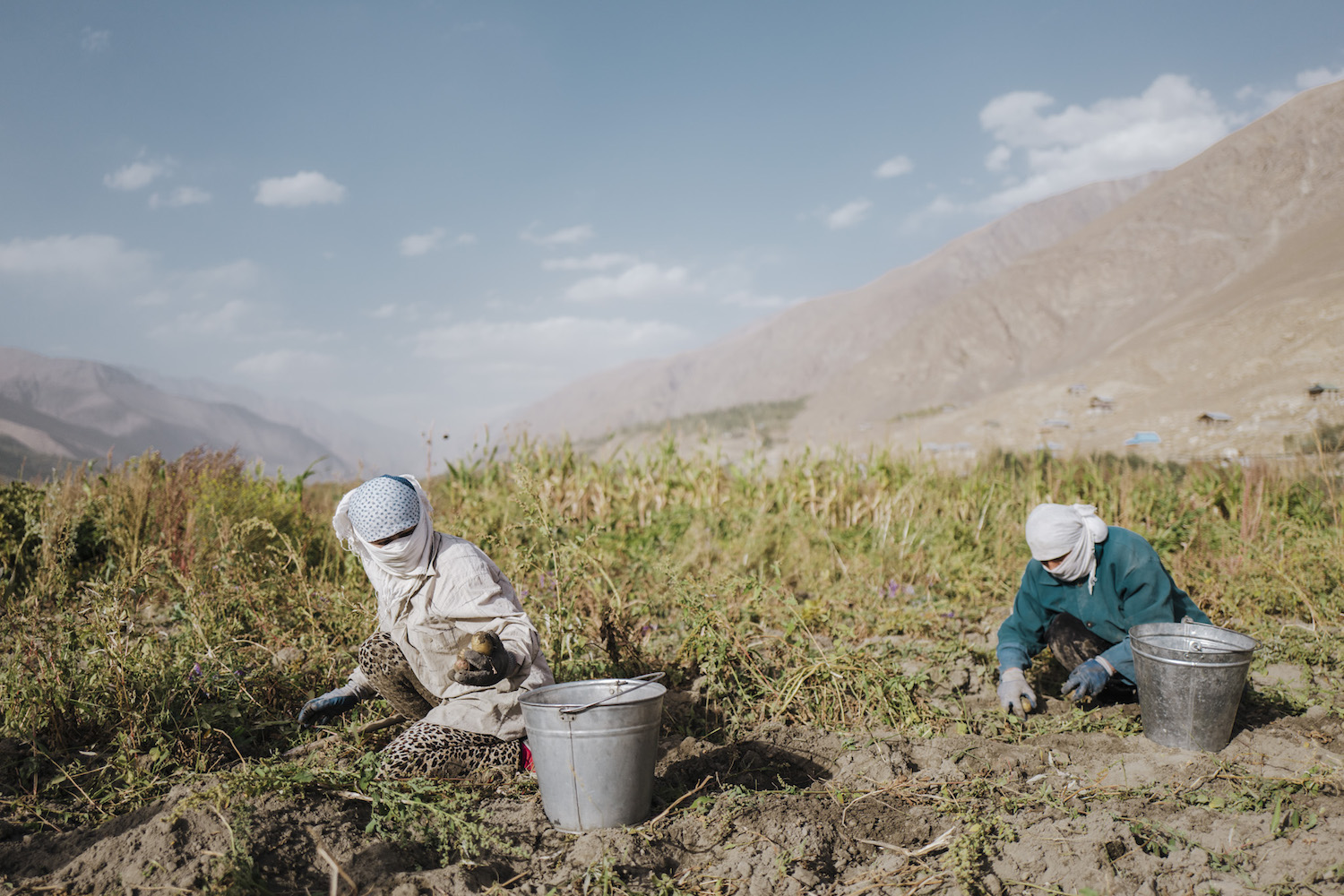
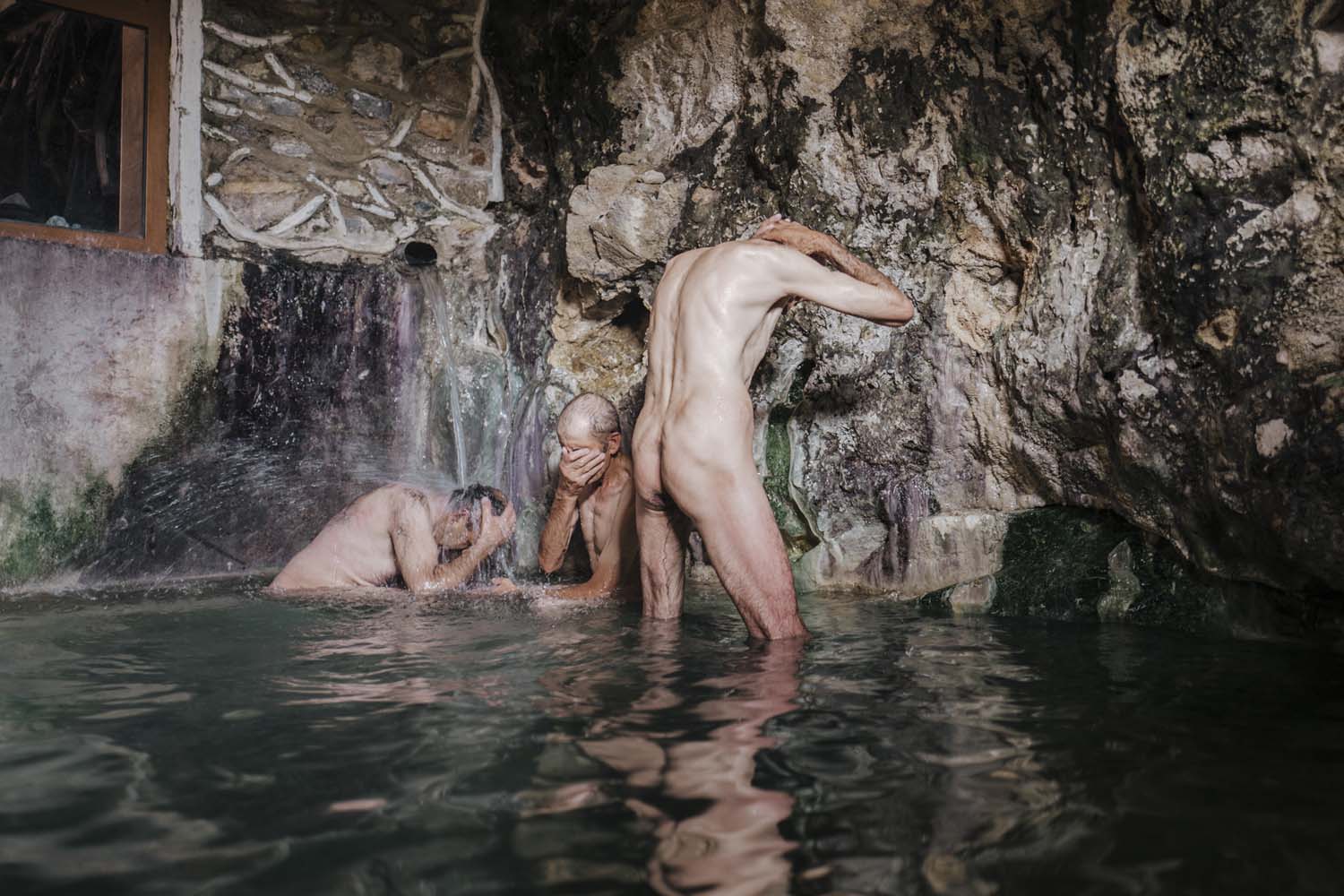
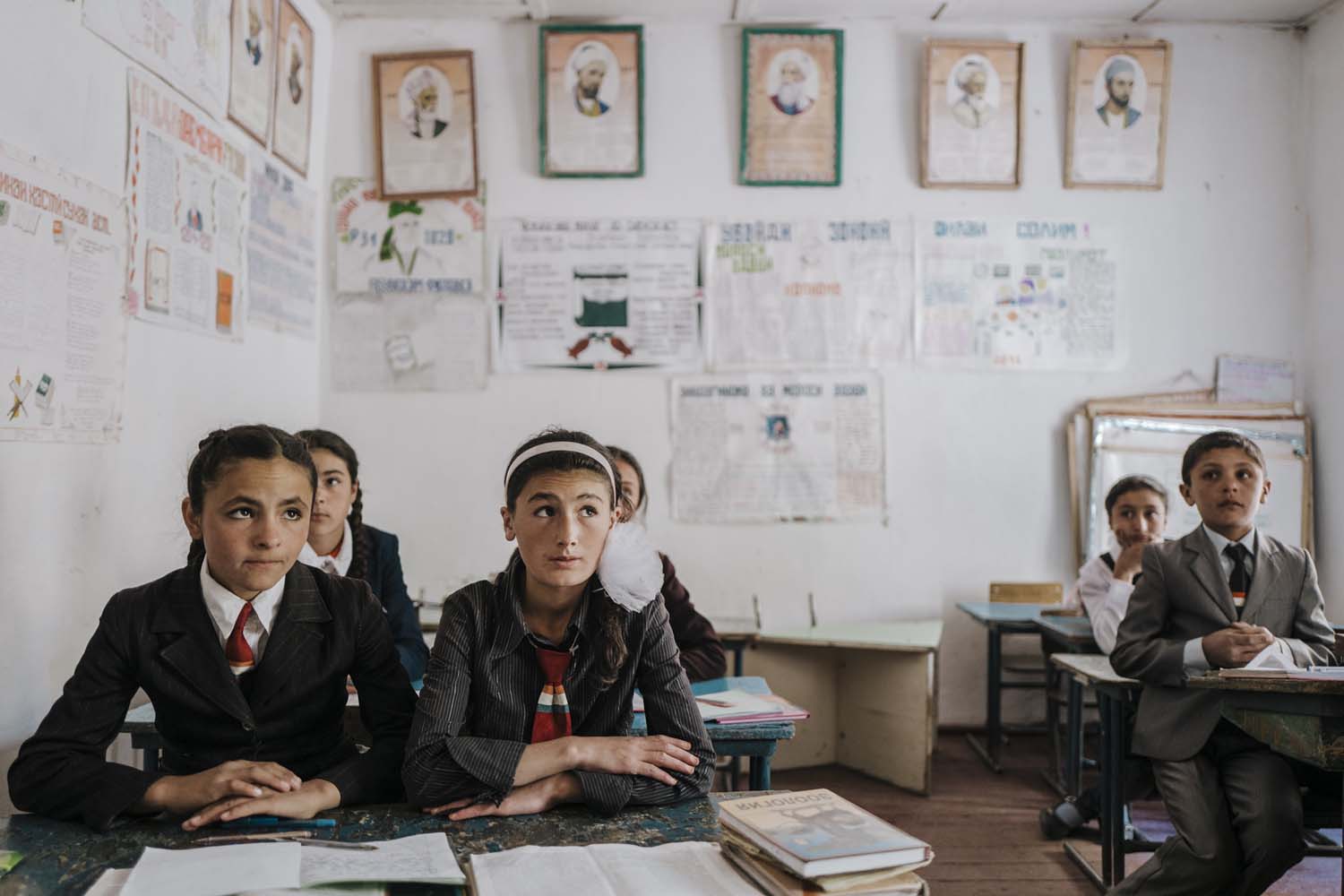
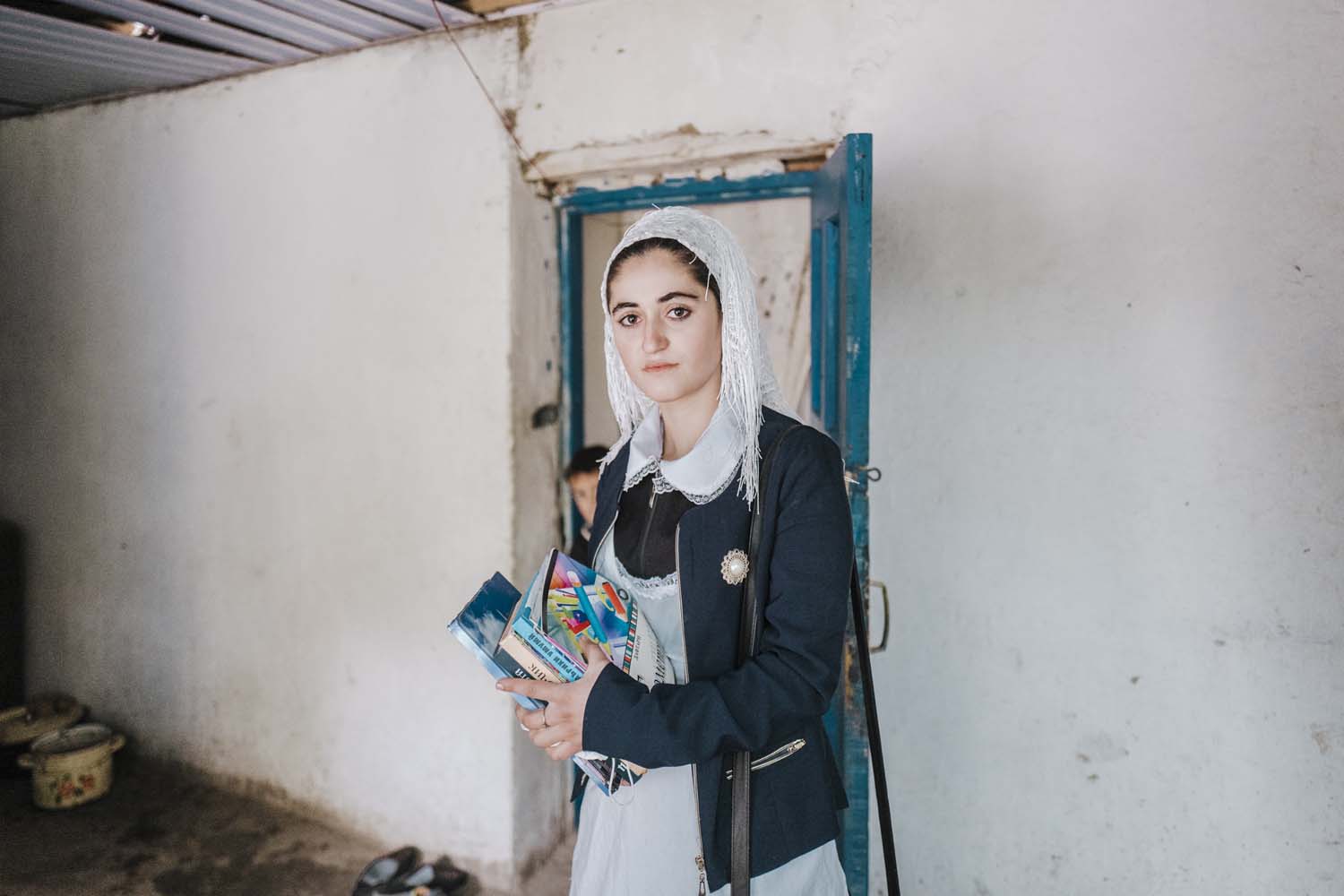
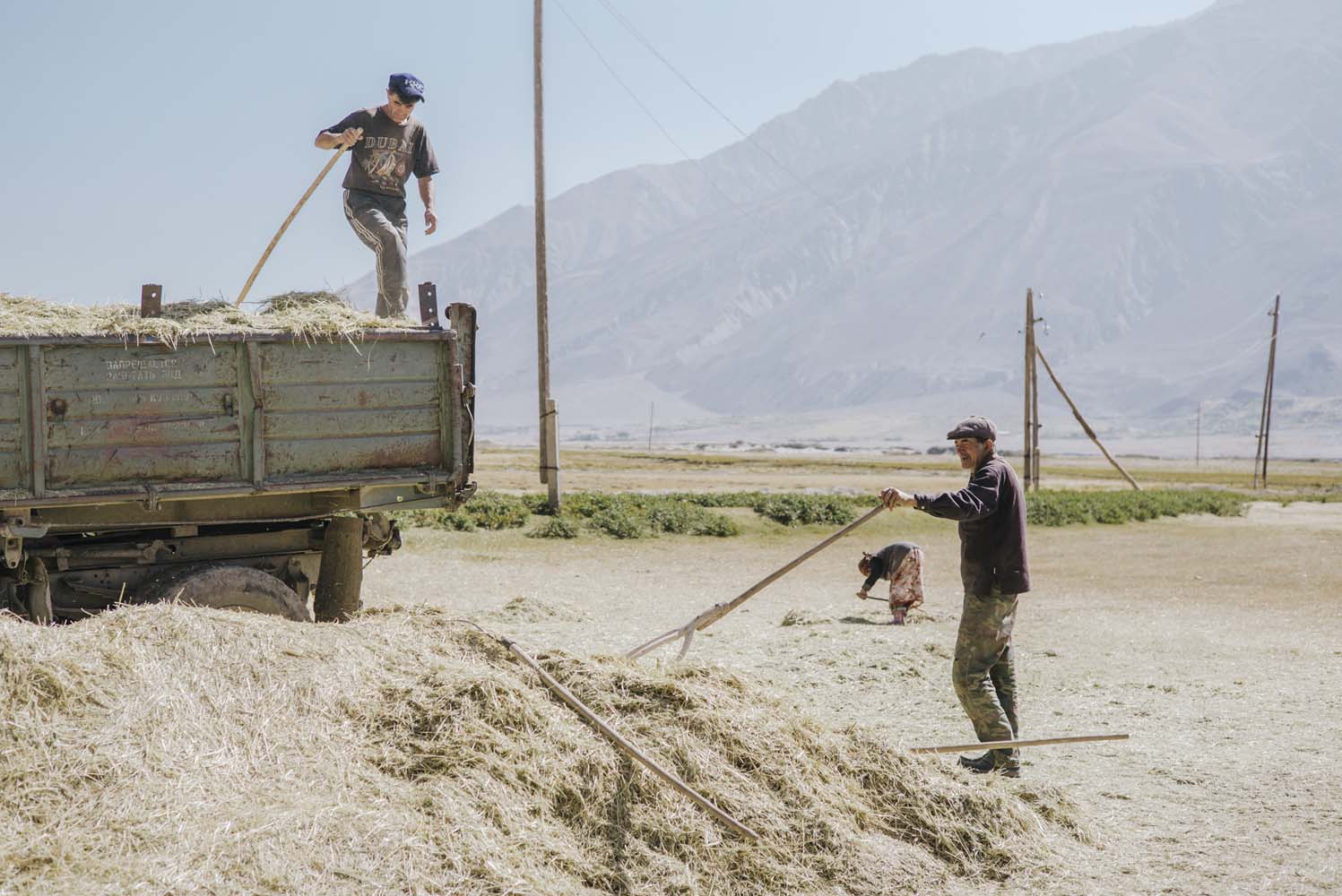
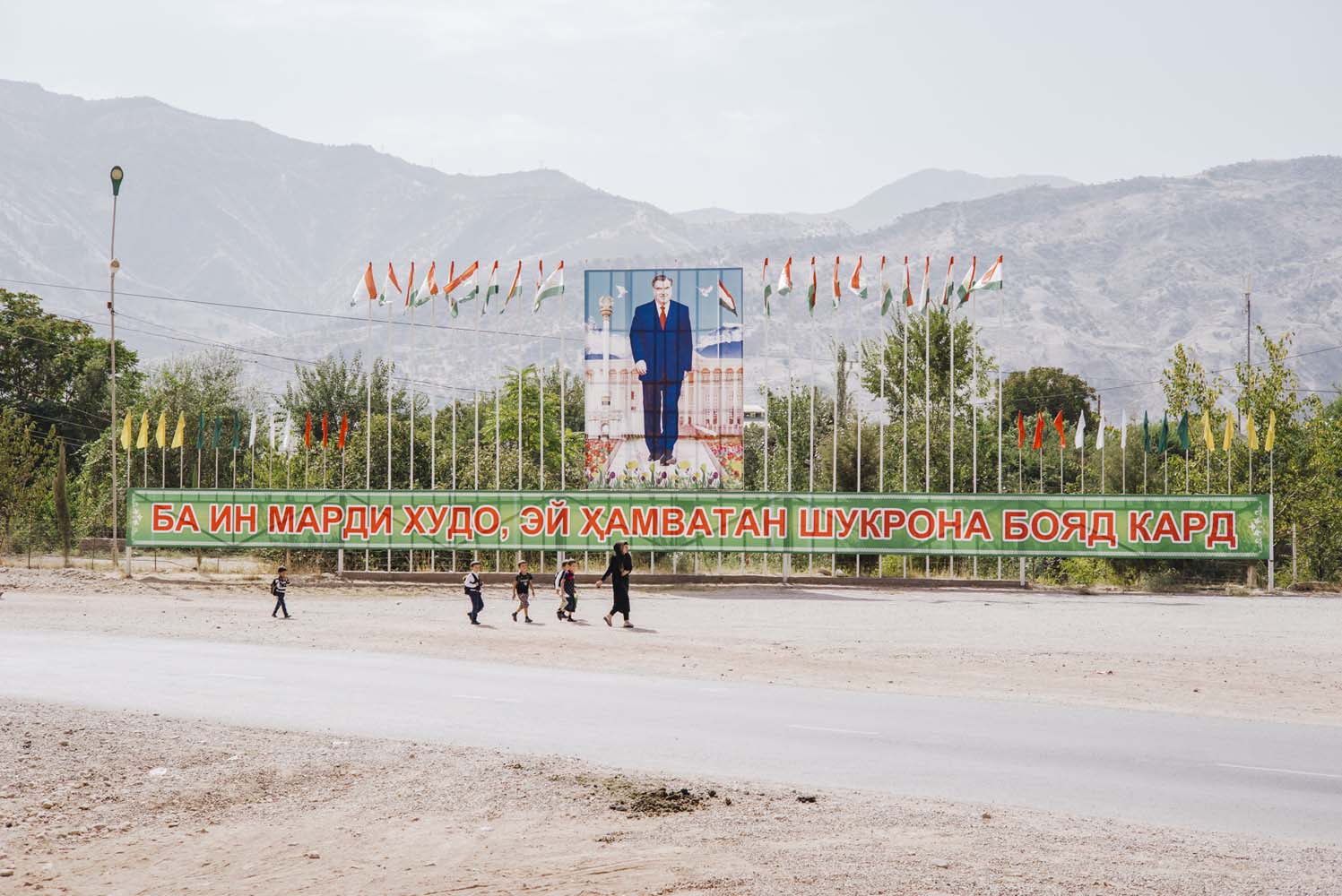
Tajikistan has become a destination for adventurers and cyclists. Although the roads are a bit rough in parts, the landscape and the people’s hospitality is fabulous. In almost every village, there are so-called homestays, where you can get food and lodging for little money and meet the friendliest people.
In Murghob, Hotel Pamir stands out architecturally from the rest of the city. The building has eye-catching glass and a cleanly painted façade. It is the only hotel for miles around, apart from a few private B&Bs. Tahir, who is 26, has been running it for a few years. He explains the conditions for an overnight stay in good English, but can also speak German. “We have many European tourists. For example, there was a crazy guy from Spain. He cycled all over Europe and is going to Mongolia,” Tahir explains after the guests have gone to their rooms. A stay in a shared room costs 20 dollars, a very high price by Tajik standards. Tahir thinks it is justified: “We can only open the hotel in summer. In winter, there are no guests, and many employees return to their home towns during the cold days. There are high operating costs due to the generators and food deliveries,” he explains.
If he had his way, the people of Murghob could make much more out of tourism. “For some time now, we have been experiencing a huge increase in visitors from all over the world. Whether from Europe, China or other former Soviet states: this place fascinates people.”
A road sign wishing drivers good luck for the journey ahead
A statue of Lenin decorates the town centre of Murghab
The country likes to be compared to Iceland: because of the variety of picturesque landscapes and the many hot springs. Tourism would help boost the crisis-ridden economy. But the government has not yet recognised this, Tahir says. “President Emomali Rahmon thinks that tourists only come for the capital Dushanbe, to look at the ostentatious presidential palace, or the second-highest flagpole in the world. He seems to have no idea how beautiful the Pamir region is.”
The last rays of the sun disappear behind the hills above the city.
Two shepherdesses lead a flock of sheep back into the valley. Shortly after, thick clouds cover Murghob and a strong wind rises, followed by a light snowfall. A few vehicles roar down the roads, people walk home. Here and there, mobile phone screens serve as a torches. A statue of Lenin stands forgotten in the middle of the village, his arms stretched out wide. No one has paid attention to him for a long time.
